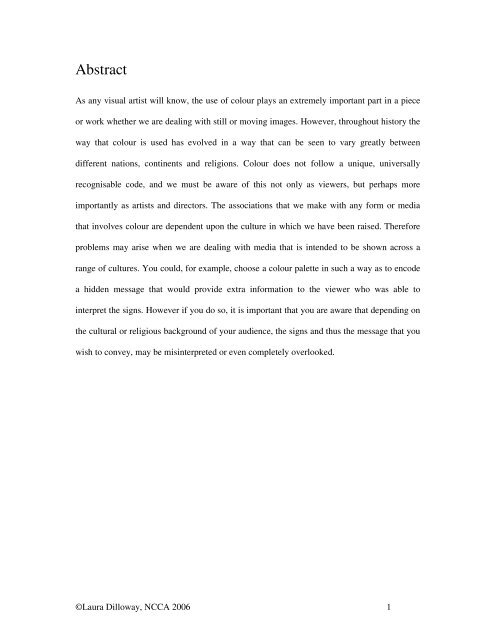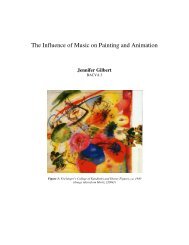An exploration into colour symbolism as used by - National Centre ...
An exploration into colour symbolism as used by - National Centre ...
An exploration into colour symbolism as used by - National Centre ...
You also want an ePaper? Increase the reach of your titles
YUMPU automatically turns print PDFs into web optimized ePapers that Google loves.
Abstract<br />
As any visual artist will know, the use of <strong>colour</strong> plays an extremely important part in a piece<br />
or work whether we are dealing with still or moving images. However, throughout history the<br />
way that <strong>colour</strong> is <strong>used</strong> h<strong>as</strong> evolved in a way that can be seen to vary greatly between<br />
different nations, continents and religions. Colour does not follow a unique, universally<br />
recognisable code, and we must be aware of this not only <strong>as</strong> viewers, but perhaps more<br />
importantly <strong>as</strong> artists and directors. The <strong>as</strong>sociations that we make with any form or media<br />
that involves <strong>colour</strong> are dependent upon the culture in which we have been raised. Therefore<br />
problems may arise when we are dealing with media that is intended to be shown across a<br />
range of cultures. You could, for example, choose a <strong>colour</strong> palette in such a way <strong>as</strong> to encode<br />
a hidden message that would provide extra information to the viewer who w<strong>as</strong> able to<br />
interpret the signs. However if you do so, it is important that you are aware that depending on<br />
the cultural or religious background of your audience, the signs and thus the message that you<br />
wish to convey, may be misinterpreted or even completely overlooked.<br />
©Laura Dilloway, NCCA 2006 1










